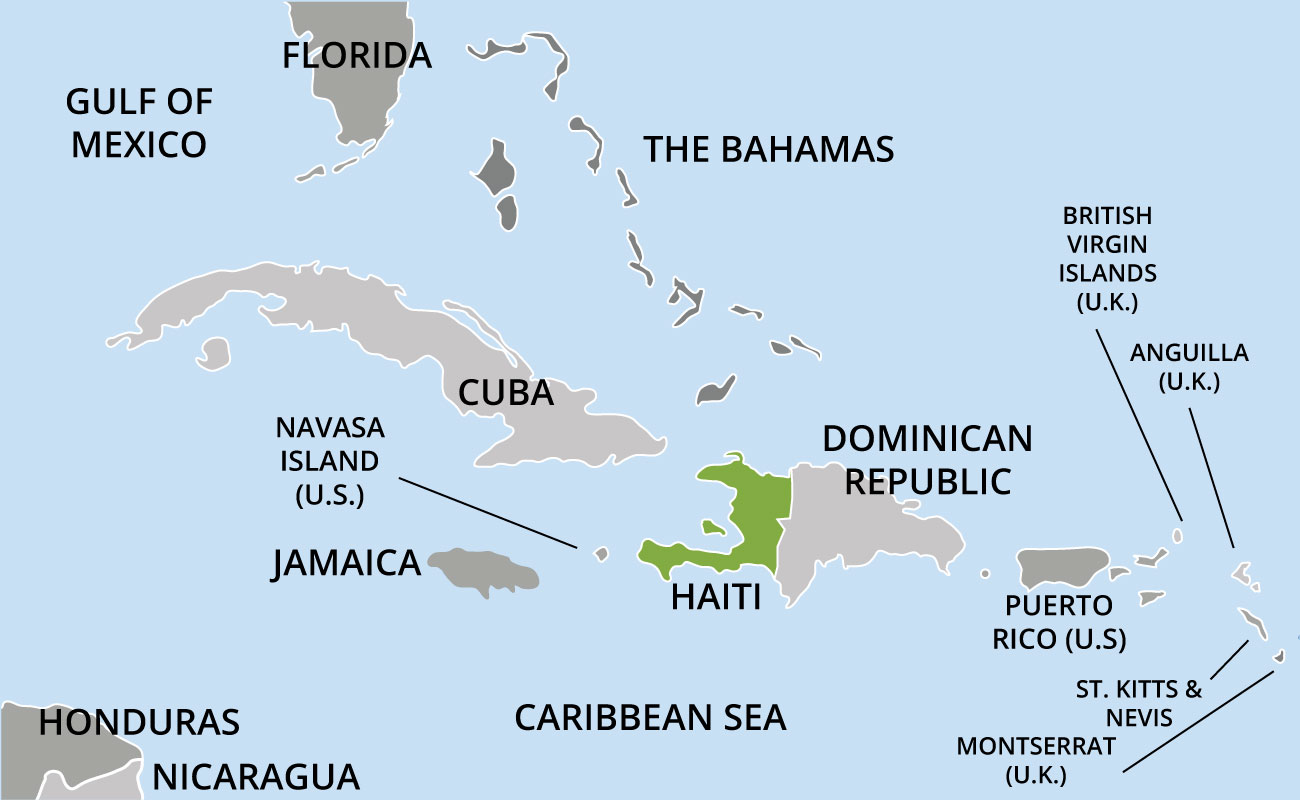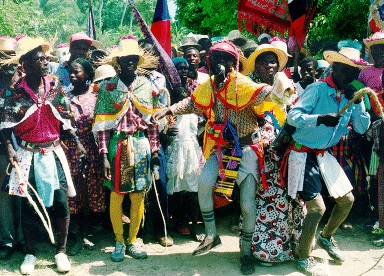
Haiti, the Essence of Africa in the Caribbean: Indigenism, Negritude, Humanocentrism
Haiti is known as one of the most Africanized places in the Americas. This is largely due to its early independence (1804) and a European embargo (1804-1825) that isolated the country from world ideas and commerce until late in the 19th century. The US did not recognize Haiti's independence until 1865, and did not trade officially with the country until that date.
Moreover, the rigid class and caste structure that exacerbated the dichotomy between urban areas (principally the capital city of Port-au-Prince dubbed, "the republic of Port-au-Prince") and the countryside, account for the fact that the mountainous interior retained, almost intact, the cultural legacy brought by the African captives from 1502 to 1791. By the time of the "Bwa Kay Iman" (The Imam's compound) socio-political congress of August 14,1791, where the captive leaders of the northern plains plantations gathered to launch the revolution that ended in the country's independence, St Domingue, the former Haiti, counted some 700,000 Africans, 40,000 mixed race people, and 40,000 Frenchmen. The Africans, largely from West and Central Africa, were from ethnic groups such as the Fon/Ewe and Yoruba of the ancient kingdom of Dahomey (Benin, Togo, and parts of Ghana and Nigeria) or Kongo from the larger Kongo-Luango-Angola region. In total there were some 101 ethnic groups that Haitians reduced traditionally to 21 nations or "nanchon".
The essence of Haitian culture is Vodou retained in the "lakou," the socio-economic compound that sustains an extended family. Presided over by an "oungan" (priest) or a "manbo" (priestess), the "lakou" evolved independently from the rest of the country, but their influences were paramount in the formation of the Haitian mindset. Three of these"lakou" located in the fertile Artibonite Valley irrigated by the Artibonite River, the largest on the island, constitute a compelling model of African retentions in the country.
Lakou Badjo, of Nago persuasion (Yoruba), traditionally headed by a woman; Nan Souvenance, of Rada persuasion (Fon); and Nan Soukri, of Kongo persuasion (Kongo-Angola), where leadership is paternal with significant input from leaders of both sexes. Non sexist, non racist, and non class conscious (which is true of all the African-derived religions in the Americas), Vodou, embodying the concept of African hospitality, is tolerant of all human and cultural expressions, as life emanating from Mawu-Lisa, Bondye, or God shares in the pristine Nature of the universe. The essence of Vodou is therefore "Humanocentric", as it puts the person in the center of the discourse (Fleurant, 1996).
A family religion that focuses on the health and welfare of its practitioners, Vodou is a holistic and danced religion. Music is central to its rituals and ceremonies which are veritable congresses of "nanchon", whose specific musics are performed in a liturgical order respecting the "regleman" or rules of diplomatic traditions and protocol when dancing servants are transcended by ancestral spirits. Called "Lwa", these spirits are said to mount the person like a rider rides a horse. The documentary Divine Horsemen: the Living Gods of Haiti (Maya Deren/Teiji Ito, 1978) illustrates this aspect of Vodou.





The choreography of the Rumba is highly pantomimed and improvisational and is characterized by the movement known as Vacunao, which is a pelvic movement or erotic symbolism. This movement is directly derived from the fertility dance or Congolese origin known as Yuka.






